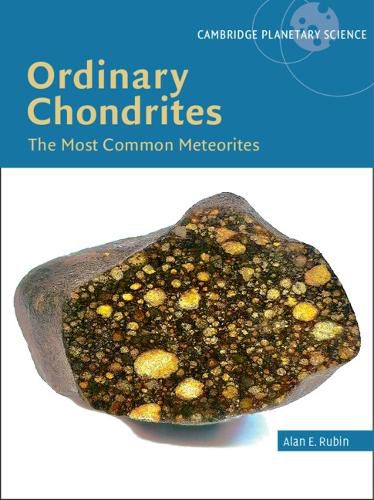Readings Newsletter
Become a Readings Member to make your shopping experience even easier.
Sign in or sign up for free!
You’re not far away from qualifying for FREE standard shipping within Australia
You’ve qualified for FREE standard shipping within Australia
The cart is loading…






Ordinary chondrites, the most abundant meteorites, constitute about 80% of meteorite falls and are essential to our understanding of cosmochemistry. They provide important information about planetary accretion, the early Solar System, and the geological history of asteroids, including such processes as thermal metamorphism, shock metamorphism, and aqueous alteration. This comprehensive guide begins with meteorite classifications and useful definitions, followed by a discussion of fall phenomena and terrestrial weathering. It provides a detailed overview of the three main ordinary-chondrite groups, which include the most primitive, least-processed meteorites known. Compositional differences among these samples furnish clues to the nature of processes operating in the solar nebula 4.5 billion years ago. These rocks also disclose information on the nature and origin of chondrules, matrix material, and metallic iron-nickel grains. This book is a valuable resource for graduate students and research professionals interested in meteorites and planetary science, as well as amateur meteorite enthusiasts.
$9.00 standard shipping within Australia
FREE standard shipping within Australia for orders over $100.00
Express & International shipping calculated at checkout
Stock availability can be subject to change without notice. We recommend calling the shop or contacting our online team to check availability of low stock items. Please see our Shopping Online page for more details.
Ordinary chondrites, the most abundant meteorites, constitute about 80% of meteorite falls and are essential to our understanding of cosmochemistry. They provide important information about planetary accretion, the early Solar System, and the geological history of asteroids, including such processes as thermal metamorphism, shock metamorphism, and aqueous alteration. This comprehensive guide begins with meteorite classifications and useful definitions, followed by a discussion of fall phenomena and terrestrial weathering. It provides a detailed overview of the three main ordinary-chondrite groups, which include the most primitive, least-processed meteorites known. Compositional differences among these samples furnish clues to the nature of processes operating in the solar nebula 4.5 billion years ago. These rocks also disclose information on the nature and origin of chondrules, matrix material, and metallic iron-nickel grains. This book is a valuable resource for graduate students and research professionals interested in meteorites and planetary science, as well as amateur meteorite enthusiasts.